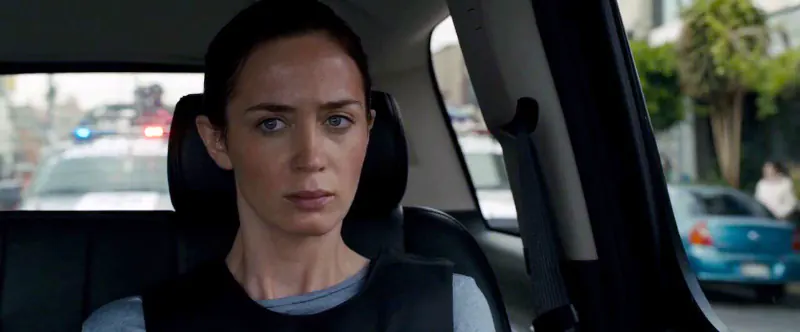Emily Blunt In Sicario's Convoy Sequence
When I saw Denis Villeneuve’s Maelstrom at a festival in 2000, I walked out. I don’t remember a thing about the film. With Sicario, the same director - Denis Villeneuve - delivered my favourite film of 2015. I’m also sure the Untitled Blade Runner Project is in the best possible hands. (And I shall henceforth refrain from making derogatory remarks about Canadian film.)
Sicario shows an astonishing directorial discipline, bringing the very best out of its creatives. Roger Deakins’ 2.35 : 1 widescreen camera work is glorious, Emily Blunt gives a career-defining performance, and I adore the movie’s score.
WHO’S THE HERO?
I may be spoiling some elements of the film, but I will attempt to discuss them in abstracto.
Sicario is a difficult story to tell for the screen, but Villeneuve directs Taylor Sheridan’s script with tremendous confidence. We open from the POV of FBI agent Kate Macer (Blunt), who gradually learns more and more about the enigmatic character of Alejandro (Del Toro). Just after the mid point, Alejandro takes a decisive action that promotes him to the story’s active character. At the end of act 2, he is the only character who transitions into the last act, leaving Kate behind. The final 24 minutes are entirely his, and all Kate does, is complete the Inner Journey in her final shot.
MARKS OF A HERO’S JOURNEY
It took me a while to get into this film. Twenty-five minutes to be precise. Before that time, we see how FBI agents are killed in an accident during a grim operation, lead by Kate Macer. Next, we are left in the dark about Kate’s exact role in her next assignment. And so is she. What exactly are the FBI’s plans with Kate? And what sort of film is this anyway? At the exact 25 minute mark, Sicario reveals itself as a mythical story. Not a traditional one, but still a powerful journey including the essential archetypes and plot points of a full-blown quest.
So what happens after twenty-five minutes?

TRIPLE THRESHOLD
The “1st Threshold” signifies the hero’s travel into the Special World. This is often a geographical trip from one place to the next.
In Sicario, Kate Macer flies to El Paso first, and from there - twenty-five minutes into the film - she crosses the Mexican border towards ‘The Beast’: Juarez. There, the FBI are joined by an escort of heavily armed Mexican police, both state and federal.
The monumental threshold sequence lasts nearly fifteen minutes. All along, our heroine doesn’t do much more than watch, from her passenger seat in a convoy of five fast-moving black chevy SUV’s.
Structurally this threshold resembles a Russian doll, and the border represents the crossing into the second act … of the threshold. You still with me?
The travel becomes increasingly suspenseful, until the cars finally stop. We are exactly halfway the sequence, when a prisoner is recovered from jail, and taken on board one of the SUV’s.
On the way back, once the Mexican state and federal police escorts have left the convoy, the threshold journey gets its own hair-raising climax, at the return border crossing into the US. And the movie hasn’t really started yet…
These filmmakers clearly understand their threshold journeys. Needless to say, I didn’t walk out.
Karel Segers
Karel Segers wrote his first produced screenplay at age 17. Today he is a story analyst, script editor and producer with experience in rights acquisition, script development and production. His
screenwriting classes have trained writers in Australia, Europe, Asia and the Middle East, and his clients include international award-winning filmmakers as well as three Academy Award nominees.
Karel is the founder of
The Story Department and he ranks in the world's Top 10 of most influential people for screenwriting on Twitter.